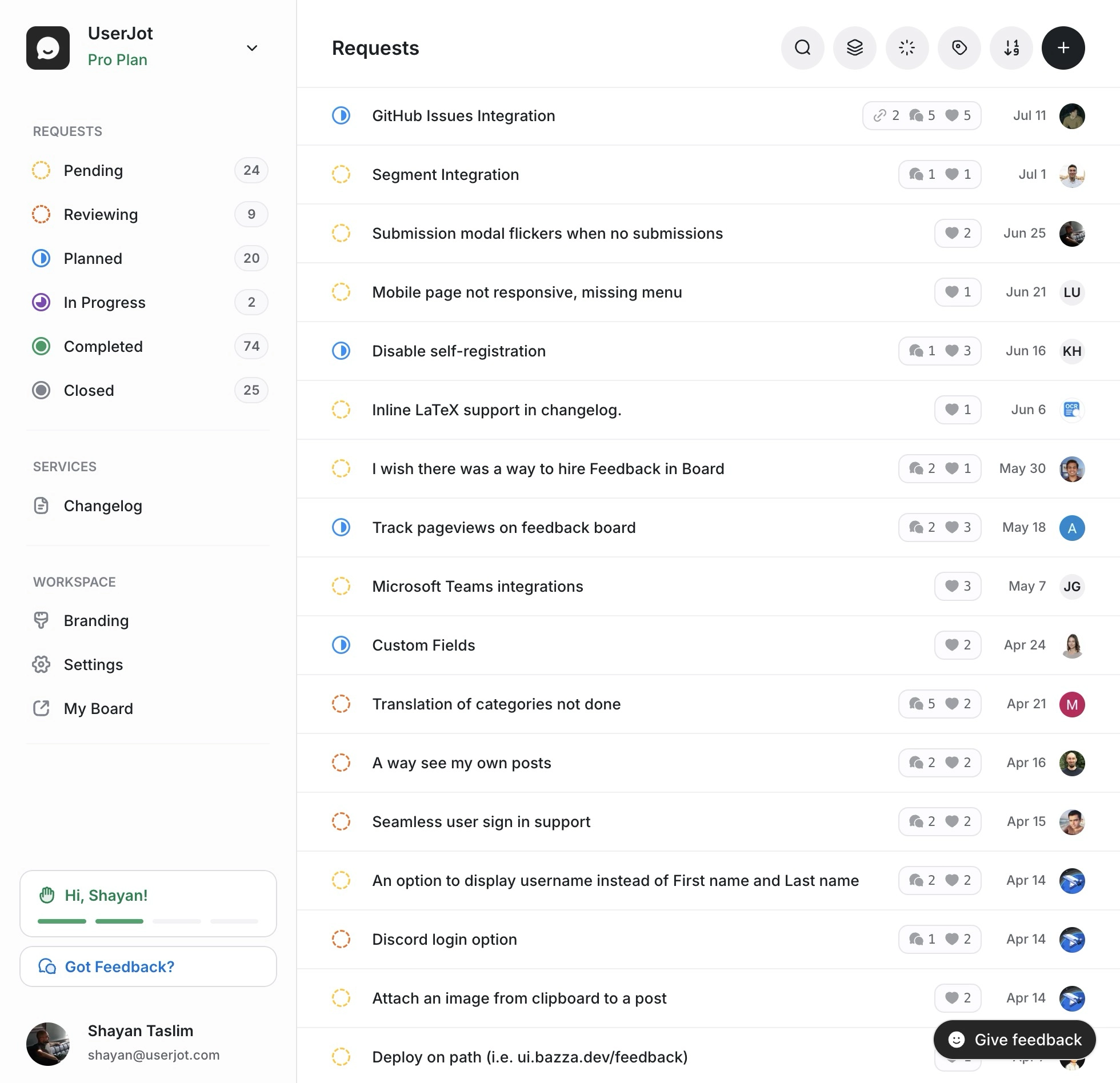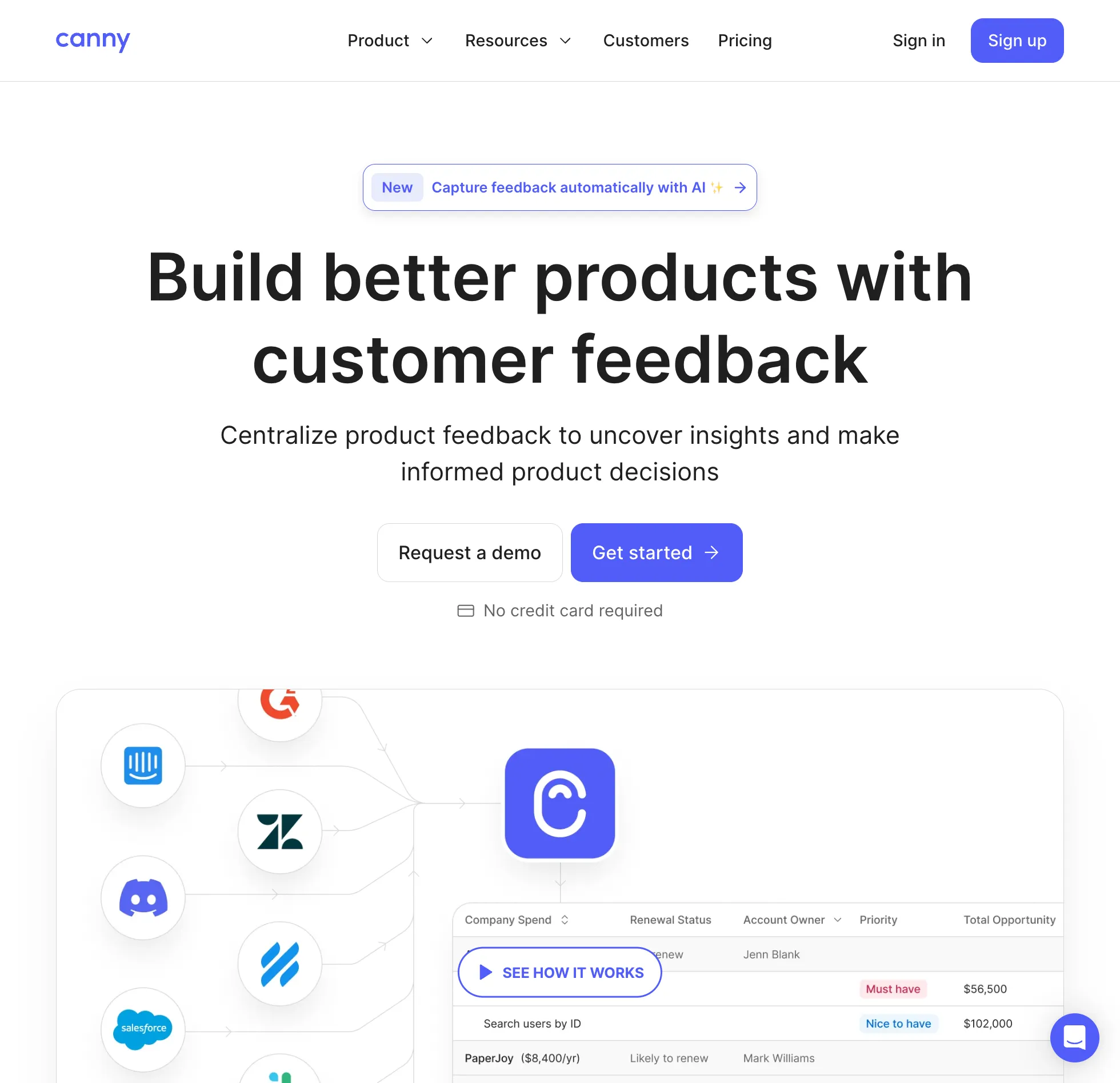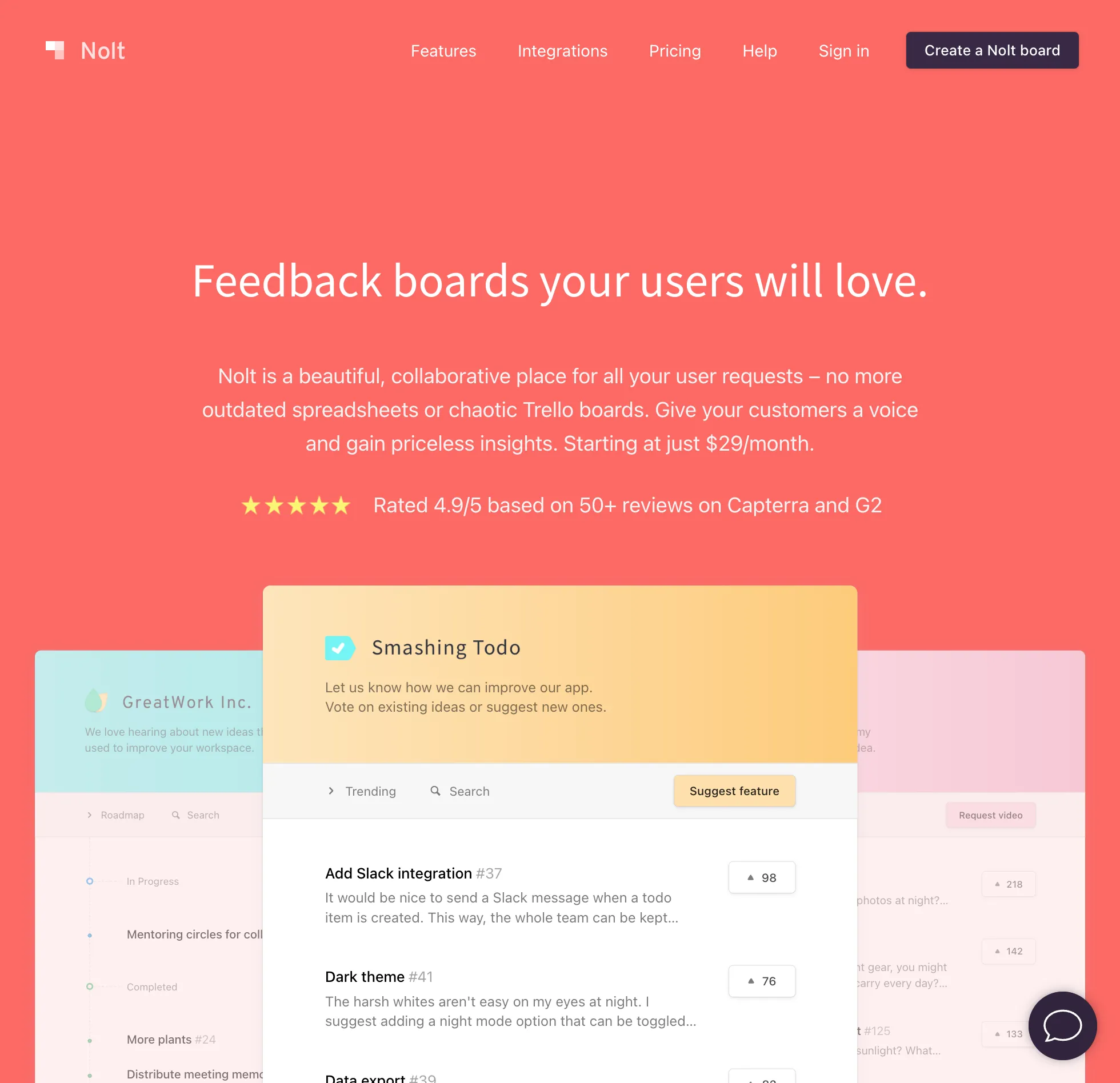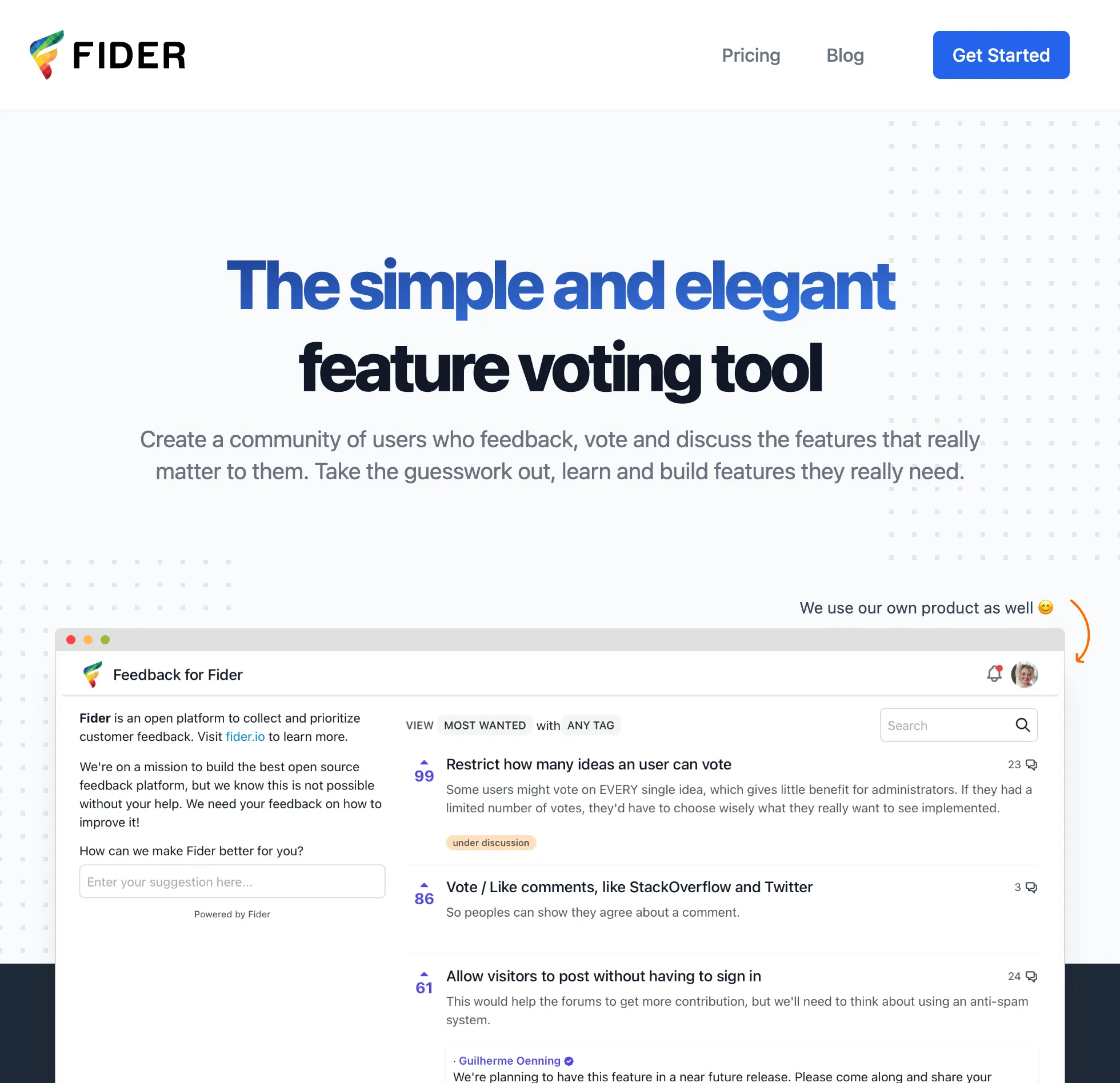Top 5 UserVoice Alternatives in 2025

UserVoice was great. In 2008. Back when the iPhone was new and we thought flip phones were pretty cool. But somewhere along the way, they decided to focus exclusively on Fortune 500 companies with Fortune 500 budgets.
Starting at $699/month minimum (and that’s if you pay annually), UserVoice has priced out 99% of the market. The interface still looks like 2008, the setup process is complex enough to require consultants, and you need quarterly billing commitments. The average UserVoice customer pays $21,000 per year.
If you’re looking for modern feedback management without the enterprise price tag, here are 5 alternatives that actually make sense for growing teams.
What is UserVoice?
UserVoice is one of the original customer feedback management platforms, launched in 2008. It allows businesses to collect feature requests, prioritize product development, and manage customer feedback through voting boards. Once revolutionary for its time, UserVoice pioneered many concepts we take for granted today: public feedback forums, voting systems, and admin response capabilities.
Today, UserVoice serves primarily large enterprises with dedicated product operations teams. Their platform includes feedback forums, ticketing systems, and basic analytics, all wrapped in an interface that hasn’t changed much since its early days.
For a detailed analysis of UserVoice’s pricing structure and hidden costs, see our UserVoice pricing breakdown.
Why Look for UserVoice Alternatives?
Beyond the shocking price tag, teams are moving away from UserVoice for several reasons:
- Outdated interface: Looks and feels like 2008 software
- Complex setup: Often requires consultants or extensive training
- Limited features: No public roadmaps, basic changelog functionality
- Poor mobile experience: Not optimized for modern devices
- Slow innovation: Minimal updates or improvements in recent years
- Enterprise-only focus: Features and support aimed at Fortune 500
- Inflexible pricing: Quarterly commitments, no monthly options
Quick Comparison Table
| Tool | Starting Price | User Limits | Setup Time | Best For |
|---|---|---|---|---|
| UserJot | $29/month | Unlimited | 5 minutes | Modern SaaS teams |
| Canny | $79/month | Tracked users | 30 minutes | Growing products |
| Nolt | $29/month | Unlimited | 10 minutes | Simple needs |
| Fider | Free (self-host) | Unlimited | 2 hours | Technical teams |
| ProductBoard | ~$2,500/month | Per seat | Days/weeks | Large enterprises |
1. UserJot: Built for Modern SaaS Teams
UserJot takes everything UserVoice does and delivers it at 5% of the cost. We built it specifically for teams who need professional feedback management without enterprise complexity.

Key Features
- Unlimited users on all plans (vs UserVoice’s 200 user limit)
- Public roadmaps with timeline views
- Automated changelog announcements
- AI-powered duplicate detection and categorization
- JWT-based SSO included (not a $10,000 add-on)
- In-app widget for seamless feedback collection
- One-click migration from UserVoice
- Weekly digest emails to keep users engaged
Pros
- 95% cost savings: $29/month vs $699/month minimum
- Modern interface: Clean design users actually enjoy
- 5-minute setup: No consultants or training needed
- Complete solution: Feedback, roadmaps, and changelogs included
- No user limits: Price stays same at 10 or 10,000 users
- Responsive support: Real humans, not phone trees
Cons
- Newer platform: Less established than UserVoice (launched 2025)
- Fewer enterprise features: No SAP integration or phone support
- Growing integration library: Still adding connections
Pricing: Free forever plan available, $29/month Starter (custom domain, branding), $59/month Professional (SSO, unlimited boards).
Best for: SaaS companies that want UserVoice-level features without UserVoice-level pricing or complexity. Perfect for teams from 1 to 1,000. Learn more on our UserVoice alternative page.
Stop guessing what to build. Let your users vote.
Try UserJot free2. Canny: The Popular Middle Ground
Canny emerged as the go-to UserVoice alternative for modern teams. They’ve built a solid product with a clean interface and good feature set.

Key Features
- Modern voting boards with social features
- Public and private boards
- Built-in roadmap tools
- Changelog with email notifications
- Good integration ecosystem
- API access
- Custom domains
- Moderation tools
Pros
- Modern design: Actually looks like current software
- Strong feature set: Covers most feedback needs
- Good integrations: Jira, Slack, Intercom, and more
- Active development: Regular updates and improvements
- Proven track record: Thousands of customers
Cons
- Tracked user pricing: Costs escalate quickly with growth
- Feature gating: Many features require expensive tiers
- No white labeling: Until enterprise plan
- Limited roadmap views: Basic kanban only
Watch the Pricing: Canny’s “tracked user” model counts anyone who gives feedback. Vote once? You’re tracked. Comment? Tracked. Their AI Autopilot adds users automatically. Teams often hit limits fast and face surprise bills. Still cheaper than UserVoice, but costs add up quickly.
Pricing: Free up to 25 tracked users, then $79-$399/month based on user count.
Best for: Teams who want a proven UserVoice alternative and don’t mind user-based pricing that can scale unexpectedly. Good for B2B with controlled user counts.
3. Nolt: Simplicity First
Nolt strips feedback management down to essentials. No bloat, no complex features, just clean and simple feedback boards.

Key Features
- Simple voting boards
- Basic roadmap functionality
- Email notifications
- Custom domains
- Guest voting without accounts
- Moderation capabilities
- CSV export
- Basic analytics
Pros
- Dead simple: Takes 2 minutes to understand
- Clean design: Minimal and focused
- Fair pricing: Flat rate, no user counting
- Fast performance: Lightweight and responsive
- No feature creep: Does one thing well
Cons
- Limited features: No changelog, basic roadmap
- Few integrations: Only essential connections
- No free plan: Must pay from day one
- Basic customization: Limited branding options
Pricing: No free plan. $29/month Essential, $69/month Pro with more boards and features.
Best for: Teams who found UserVoice overwhelming and just want simple feedback collection that works. Perfect for small teams or side projects.
4. Fider: The Open Source Option
Fider brings transparency to a whole new level with open source code. Perfect for developer-focused products or teams with specific requirements.

Key Features
- Open source and self-hostable
- Basic voting boards
- Reddit-style upvoting
- User authentication
- Email notifications
- API access
- Docker deployment ready
- Community-driven development
Pros
- Completely free: If self-hosted
- Full control: Your data, your servers
- Customizable: Modify code as needed
- No vendor lock-in: Export and leave anytime
- Privacy-focused: Keep data in-house
Cons
- No roadmap feature: Major missing functionality
- No changelog: Need separate solution
- Technical requirement: Needs DevOps knowledge
- Maintenance burden: Updates, security, backups on you
- Basic features only: No advanced analytics or AI
Pricing: Free if self-hosted (plus server costs), $49/month for managed hosting with support.
Best for: Developer tools, open source projects, or teams with strong technical capabilities who want full control. Not for non-technical teams.
5. ProductBoard: Enterprise Plus
If UserVoice isn’t enterprise enough for you (yes, that’s possible), ProductBoard goes even further with advanced prioritization and strategic planning tools.

Key Features
- Advanced prioritization frameworks (RICE, custom scoring)
- Strategic alignment tools
- Customer insights portal
- Impact mapping
- Multiple product line support
- Enterprise integrations (Salesforce, SAP, Microsoft)
- Custom workflows and permissions
- AI-powered insights and trends
Pros
- Sophisticated prioritization: Multiple frameworks and scoring
- Strategic tools: Connect feedback to business objectives
- Enterprise ready: All compliance and security certifications
- Extensive customization: Workflows, fields, permissions
- Professional services: Implementation support included
Cons
- Extremely expensive: $70,000-$100,000/year typical
- Complex setup: Weeks or months to implement
- Steep learning curve: Requires training for teams
- Overkill for most: Too much for simple feedback needs
Pricing: Contact sales only. Minimum ~$30,000/year, typically $70,000+ for meaningful usage.
Best for: Large enterprises with complex product portfolios who find UserVoice too basic and have substantial budgets. Think Microsoft, not startups.
How to Choose the Right UserVoice Alternative
By Budget
Under $30: UserJot Free (unlimited users) or Nolt Essential ($29)
$30-100: UserJot Starter/Pro ($29-59) or Canny ($79, watch limits)
$100-500: Canny Growth or multiple UserJot workspaces
Enterprise: ProductBoard (complex needs) or UserVoice (if you must)
By Company Stage
Pre-launch/MVP: UserJot Free or Fider (self-hosted)
Early startup (1-10): UserJot Starter or Nolt
Growth stage (10-50): UserJot Professional or Canny
Scale-up (50-200): UserJot Professional (unlimited users advantage)
Enterprise (200+): ProductBoard or stay with UserVoice
By Technical Capability
Non-technical: UserJot, Nolt, or Canny
Some technical skills: Any option works
Strong technical team: Consider Fider for full control
Migration Difficulty from UserVoice
- Easiest: UserJot (one-click import)
- Moderate: Canny (import tools available)
- Harder: Nolt, Fider (CSV import only)
- Hardest: ProductBoard (requires professional services)
Making the Right Choice
If UserVoice is too expensive: UserJot gives you everything at 5% of the cost. Canny and Nolt are also solid options under $100/month.
If UserVoice is too complex: Nolt strips away complexity. UserJot balances features with simplicity.
If UserVoice is too limited: ProductBoard adds enterprise features (at enterprise prices). UserJot includes public roadmaps and better changelogs UserVoice lacks.
If you want open source: Fider lets you own everything, though you’ll need technical skills.
For most teams: UserJot hits the sweet spot with professional features, modern design, fair pricing, and no user limits. It’s what UserVoice could have been if they hadn’t abandoned everyone except Fortune 500 companies.
The feedback tool market has evolved significantly since 2008. You don’t need to pay $21,000/year for outdated software anymore. Pick a tool that fits your budget and workflow, not one that requires a procurement department.
Stop guessing what to build. Let your users vote.
Try UserJot freeFrequently Asked Questions
Why is UserVoice so expensive compared to alternatives?
UserVoice focuses exclusively on large enterprise customers now. Starting at $699/month with quarterly billing minimums and average customer paying $21,000/year, they’ve deliberately priced out smaller teams. Modern alternatives like UserJot offer similar or better features starting at $29/month because they’re built efficiently with modern technology and don’t have 2008-era infrastructure costs.
Can I migrate my data from UserVoice to these alternatives?
Yes, migration is straightforward with most alternatives. UserJot offers one-click migration that preserves all your boards, posts, votes, and user data. Canny provides import tools and migration guides. Nolt and Fider support CSV imports for basic data. Most alternatives actively help with migration to win your business away from UserVoice.
Do these alternatives offer the same security and compliance as UserVoice?
UserJot and Canny offer SOC 2 compliance, GDPR compliance, and enterprise-grade security features. ProductBoard actually exceeds UserVoice’s security standards with additional certifications. Fider (self-hosted) gives you complete control over security implementation. For most teams, these alternatives match or exceed UserVoice’s security capabilities.
Which alternative has the best pricing for small teams?
UserJot wins on pricing with a generous free plan supporting unlimited users, and paid plans at $29-59/month regardless of team size. Nolt offers simple $29/month flat pricing. Canny’s free plan works for very small teams but hits limits at 25 users. All are 90-95% cheaper than UserVoice’s $699/month minimum.
Can users vote without creating accounts on these tools?
Guest voting is supported by UserJot, Nolt, and Fider, allowing users to participate without registration. Canny requires email verification but not full accounts. UserVoice requires complete account creation with verification. Studies show guest voting can double or triple participation rates compared to requiring accounts.
Which tools include public roadmaps that UserVoice lacks?
UserJot, Canny, Nolt, and Fider all support public roadmaps, a critical feature for transparency that UserVoice surprisingly lacks even on expensive plans. UserJot and Canny offer the most advanced roadmap features with timeline views and status tracking. If public roadmap visibility matters for your user engagement, avoid UserVoice.
What’s the main difference between these UserVoice alternatives?
UserJot focuses on being complete, modern, and affordable with no user limits. Canny is feature-rich but has escalating user-based pricing. Nolt keeps things minimal and simple. Fider is open source for full control. ProductBoard targets complex enterprises. All are more modern, affordable, and actively developed compared to UserVoice.
Is UserVoice still worth considering in 2025?
Only if you’re a Fortune 500 company with specific legacy integration requirements and a $20,000+ annual budget that’s already approved. For literally everyone else, modern alternatives offer better features, design, support, and value at 5-10% of UserVoice’s cost. UserVoice’s lack of innovation and extreme pricing make it obsolete for most teams.
How quickly can I switch from UserVoice to an alternative?
Most teams can switch in under a day. UserJot’s migration takes about 10 minutes with their automated tool. Setting up the new platform typically takes 30 minutes to 2 hours. Training your team is minimal since modern alternatives are more intuitive than UserVoice. You could switch during lunch break and have everything running by afternoon.
What features will I lose moving from UserVoice?
Honestly, you’ll gain features, not lose them. UserVoice lacks public roadmaps, has basic changelog functionality, outdated UI, and limited integrations. Modern alternatives like UserJot add AI-powered features, better design, public roadmaps, and cost 95% less. The only thing you might “lose” is phone support, which most teams don’t use anyway.